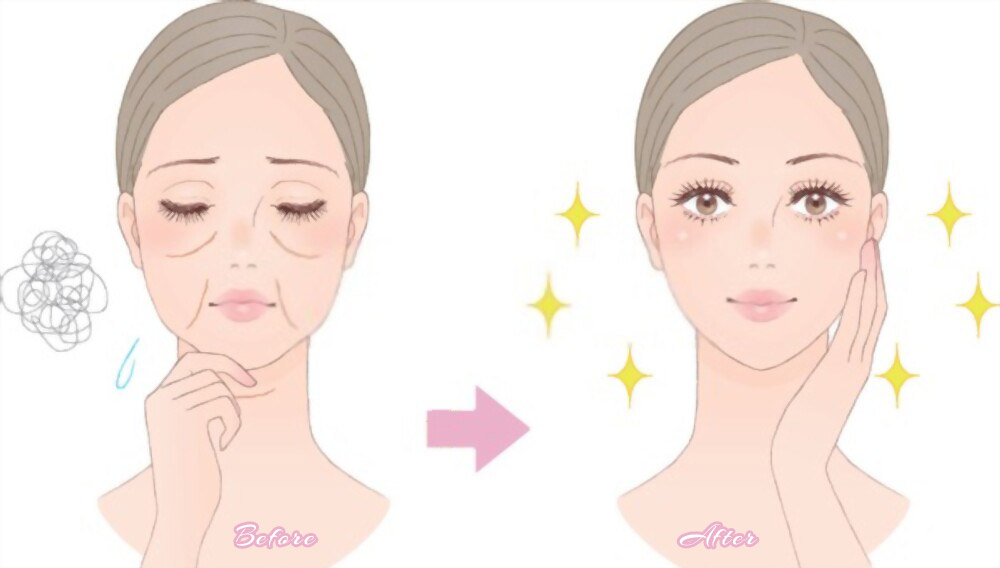No products in the cart.

Facelift – Things You Should Know Before Procedure.
The truth is, no one likes to have a loose, saggy, or wrinkled-looking face. It does not matter the age, social status, health status, or otherwise. The face is the first line of identification/recognition and a mirror for your own self-esteem/confidence. Hence, it is a delicate part of our physique in our subconscious. The skin on the face can deteriorate over time due to various factors. These factors include regular and long-term sun exposure, toxins in skin care products and makeup, air or environmental pollution, gravity, and age.
The skin around the face may begin to slacken, develop creases and wrinkles, and lose its luster. Today’s market is flooded with products whose ‘claim to fame’ promises to minimize wrinkles, rejuvenate the skin, and improve the overall facial look. This may be true for some cases, but then, they could assist for a day, a week, or a few months, but none of them can replace a face lift’s gorgeous new start with a longer-lasting promise.
Maybe you have tried these types of lotions, facials, and cosmetic treatments but are experiencing little to no results, and you are confused as to what to do next? If that was not enough pain, you tend to become self-conscious when people look at your face for too long. One popular quick-fix yet the more long-term option is a facelift, also known as a rhytidectomy, to correct this uncomfortable situation.
Among the various cosmetic procedures carried out in the USA, facelift surgery remains one of the most common facial cosmetic operations performed. It was the seventh most popular kind of cosmetic surgery among men. Yes, even the men are not left out in the fray for a firmer youthful face. In the United States in 2016, it was reported that 13,702 men and 107,261 women underwent facelift surgery.
Aging, sickness, drugs, weight loss could cause your facial skin to lose its suppleness. We all agree that sagging or loose skin around the jawline or neck can be pretty uncomfortable, especially when you look at your reflection in the mirror. Depending on your aspirations, a facelift procedure or rhytidectomy might be the best option to achieve your cosmetic objectives. This surgical operation removes extra fat/flesh from the face, tightens the facial muscles, and gives the face a more youthful look. It is not a permanent fix, but it beats most alternatives.
Let’s dive into what it is and other facts to help you decide if you are a perfect fit for the surgery.
What is a Facelift?
As stated above, a facelift (also known as rhytidectomy) is an aesthetic surgical operation that can help with your looks. Sagging, folds of skin, and contour of your face that occur with age, can be reduced with this surgery. A facelift involves pulling back a flap of skin on either side of the face and surgically altering the tissues beneath the skin to restore the face’s curvature towards a more youthful form.
This surgery can erase deep creases around the forehead, mouth, nose, excess drooping skin and fat just underneath the jawline and in the neck. The procedure can also tighten underlying tissues and be combined with other surgical procedures to enhance the look of the forehead, cheeks, brows, and eyelids, depending on the need.
Who Needs a Facelift?
Due to natural age-related changes, effects of long time use of makeups, cosmetic, prolonged sun exposure, weight loss, sickness etc., the look and shape of your face might experience a few changes. Any one of these conditions may cause fat deposits to decrease in some areas of your face as your skin becomes less elastic and loose. The following are age-related changes in your face that may be minimized with a facelift:
- Your cheeks have started to sag.
- Excessive skin around the lower jawline (jowls)
- The skin fold from the side of your nose to the corner of your lips deepens.
- Neck skin that has sagged and fat that has accumulated (if the procedure includes a neck lift)
Other candidates for facelifts include:
Healthy non-smokers or drug abusers with no medical issues that could compromise their healing process. Remember smoking before surgery can have dire consequences. Don’t test fate on this!
For age-related facelifts, let’s look at the best-suggested age range for facelift surgery and briefly at the various facelift options available to you.
When Is the Best Time to Get a Facelift?
Getting a facelift is a highly individual choice. Quite frankly, you should start with an honest discussion with your board-certified plastic surgeon. That said, a facelift is most effective for persons in their 40s, 50s, and above when indications of aging begin to appear. Deep lines, wrinkles, fine lines, and sagging skin are signs of aging. They are best treated surgically rather than non-surgically.
However, there is no set age for facelift surgery; everyone ages at a different rate due to several variables. When aging begins, and non-surgical therapies like neuromodulators, fillers, and skin resurfacing therapies no longer deliver the results you want, you should consider a facelift.
Pro Tip: Remember that ad, “not for persons under age…” well, anyone under the age of 30 with no facial issues or diseases should avoid getting a facelift. Under 30’s should consider adopting a healthier, more sustainable face and health routine. This will help slow down the signs of aging.
Types of Face-Lifts
Dependent on your goals, a few different types of facelifts may be a better fit for you. However, this will be determined by your plastic surgeon or medical consultant. According to plastic surgeon Michele Koo, MD, FACS, double board-certified and the founder of Private Practice Skincare, there are numerous types of facelifts.
Mini-Facelift: The mini facelift is a simplified facelift that tackles sagging skin around the neck and jawline.
Mid-facelift: Often known as a cheek lift. It focuses on correcting sagging skin from the upper mouth to the eyes, and the cheeks and nose are included in this area.
Non-surgical facelifts: This doesn’t involve general anesthesia or big incisions, but they address aging signs, including drooping or sagging skin, creases, and wrinkles. Non-surgical techniques that target the skin of the face include vampire facelifts, liquid facelifts, and thread lifts.
Benefits of Face-Lifts.
- Facelifts are one-step procedures that address a variety of signs of aging.
- Facelift procedures can be combined with other cosmetic procedures to achieve the best results.
- The fastest way to help you get rid of a double chin.
- A natural-looking new, younger you.
- Your jowls (lower or drooping jawline) can be removed with a facelift.
- Facial skin that has become sagging will be tightened.
- Facelifts, if correctly done, give surgical scars that aren’t visible
- Facelifts help drastic reduction in the visibility of deep wrinkles
- Facelifts aren’t gender-specific, and men can also have a facelift.
Facelift Risks and Side Effects.
As with all medical procedures, e.g., liposuction, butt-lifts, abdominoplasty, etc., facelifts also have risks. The following are some of the dangers:
- dangers of anesthesia.
- Bleeding and possible infection.
- Hair loss at the incision sites.
- Pain.
- Scarring.
- Numbness or changes in cutaneous sensitivity.
- Injury to the facial nerve.
- Hair loss at the incision areas may be temporary or permanent.
- Nerve Injury.
- Blood clots.
- Difficult wound healing.
- Long-term swelling.
- Irregular skin coloration.
Factors to Consider Before Opting for a Face-lift.
There are other significant factors to consider before undergoing a facelift: such as,
- A facelift is not the elixir of youth. The effects of a facelift procedure usually last between seven to ten years. Then you continue to age normally. As stated earlier, it is not a permanent solution.
- Unless paired with facial reconstruction surgery, a Facelift will not make you more or less beautiful. Facelift operations will not significantly alter your overall look.
- Fluctuating weight: If you repeatedly gain and lose weight, the facelift may not be satisfactory or may last for just a limited period. This is because a fluctuating weight affects the shape of your face and skin condition.
- Facelifts do not address superficial wrinkles, sun damage, or skin color anomalies.
- Medications or supplements that thin the blood. Blood-thinning medications or supplements can impair your blood’s capacity to clot, increasing your risk of developing hematomas after the surgical procedure. Blood thinners (Coumadin, Plavix, and others), aspirin, nonsteroidal anti-inflammatory medicines (NSAIDs), ginseng, Ginkgo biloba, fish oil, and other supplements are among these pharmaceuticals. Hence, the need to have an honest discussion with your surgeon.
- Medical problems. You won’t get a facelift if you have a medical problem that hinders blood clotting. Wound healing, hematomas, and heart problems are increased by other illnesses like poorly controlled diabetes or high blood pressure.
- Make sure you go to a board-certified surgeon if you decide to receive a facelift. As simple as the surgery might look, the effects are life-altering. Negatively; if done wrong.
Questions to ask your plastic surgeon before having a facelift?
So you might be nervous about being too curious when visiting your surgeon for a consultation on having a facelift. This is normal, and don’t worry. The surgeon is trained to answer your questions while easing your fears patiently. During your facelift consultation, you can use the following checklist to get you started:
- Are you a board-certified plastic surgeon?
- With which board are you certified?
- Are you a plastic surgeon who has received specialized training?
- How many years have you spent studying plastic surgery?
- Do you have permission to conduct this surgery in a hospital? If so, which hospitals are you talking about?
- Is the office-based in a surgical facility accredited, licensed, or certified by a nationally or state-recognized accrediting agency?
- How long would it take me to recuperate, and what type of assistance will I require during that time?
- What are the dangers and potential problems of a facelift?
- What are the procedures for dealing with complications?
- What can I expect my face to look like in the future?
- What choices do I have if I’m unhappy with the cosmetic results of my facelift?
- Do you have any before-and-after images for this operation that I may look at to see what kind of outcomes I should expect?
- Is this a technique that I would be a suitable candidate for?
- What would be needed of me to get the best results?
- What will you do with my operation, and where will you do it?
- What is the best surgical approach for me?
In summary a facelift, when performed by a skilled, board-certified cosmetic surgeon, may produce results that not only appear natural immediately but will also age gracefully with you. While nothing will stop the natural aging process, you should always engage in a healthy lifestyle. Make everyday choices to maintain the facelift while helping you appear years younger.
Significant weight changes can cause the skin to stretch out again, so maintaining a healthy, consistent weight is top on the ‘to do-list’. Whether or not you opt for a facelift, adopt a consistent morning and bedtime facial routine plus an overall skincare routine as suggested by your surgeon or dermatologists. This will keep your skin healthy and protected from premature aging.
Facelift surgery is a safe and effective approach to rejuvenate the face when performed by a trained cosmetic surgeon. But, consultation with a board-certified cosmetic surgeon is the best and safest method to determine if a facelift is correct for you.








Leave a Reply